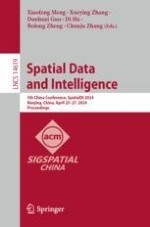2024 | OriginalPaper | Buchkapitel
Spatio-Temporal Sequence Prediction of Diversion Tunnel Based on Machine Learning Multivariate Data Fusion
verfasst von : Zenghui Bi, Huan Zhao, Changping Li, Yan Xia
Erschienen in: Spatial Data and Intelligence
Verlag: Springer Nature Singapore
Aktivieren Sie unsere intelligente Suche, um passende Fachinhalte oder Patente zu finden.
Wählen Sie Textabschnitte aus um mit Künstlicher Intelligenz passenden Patente zu finden. powered by
Markieren Sie Textabschnitte, um KI-gestützt weitere passende Inhalte zu finden. powered by
